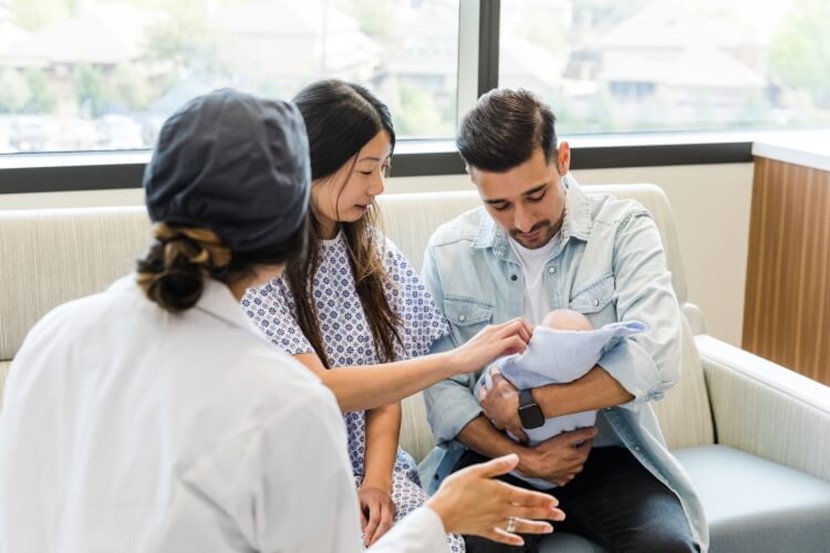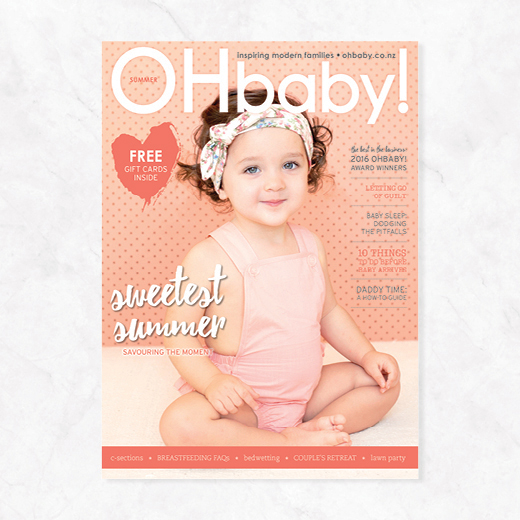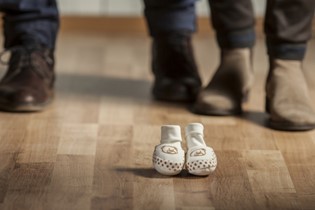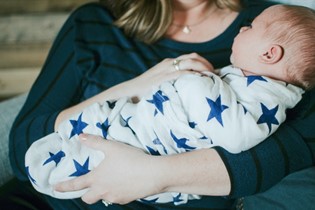What you can expect after a c-section

The average hospital stay after a C-section is three days. During this time the team of midwives and doctors will visit regularly to ensure you are recovering well. Some maternity hospitals around the world follow the EROS programme (Enhancing your Recovery after Obstetric Surgery) – ask if your hospital is participating. EROS is specifically designed to accelerate recovery after surgery and improve patient experience. It has a structured approach to care in which you are actively involved and encouraged to set goals for your recovery.
Once you’re home
Post-C-section, mothers are encouraged to take paracetamol and/or anti-inflammatory tablets (such as ibuprofen) on a regular basis for pain relief, so that you can comfortably look after yourself and your baby. These medications are safe for breastfeeding. It is very important that you eat healthily and drink plenty of fluids. You can continue taking multivitamins or iron supplements until you feel your diet is back to normal.
Wound care and hygiene are important and may affect how long your C-section wound takes to heal. Gently clean and pat dry the area once daily, and look for redness, pain or oozing. After a C-section, you will not be able to do some activities straight away, such as driving a car, exercising, or carrying heavy things (heavier than the baby). You should only do these once you feel able, and when they do not cause pain.
Rest and sleep are very important in your recovery. It is important to have someone at home to help you with chores such as vacuuming and shopping. Don't be shy about asking family and visitors to bring healthy snacks or precooked meals, or to hang out your washing while they are there.
You can start driving if you are not taking any narcotics, and when you can comfortably ‘slam on the brakes’ without it pulling on your lower abdomen – usually about four weeks. It is advisable to wait until your vaginal bleeding has stopped before resuming sexual intercourse, due to the potential for infection in the uterus. This can take up to six weeks.
Tell your midwife or doctor if you develop a cough or shortness of breath, or swelling and pain in your calf, so that they can make sure that these symptoms are not due to a blood clot.
Caesareans and breastfeeding
If you have had a C-section, you may have more difficulty starting to breastfeed simply because of the IV drips, monitor wires, and numbness in your legs following the anaesthetic. Some women experience a delay with their milk coming in after a C-section. Keep feeding your baby regularly to help establish your milk supply. If your baby is unwell and has to be cared for in the newborn unit, you will be encouraged to visit often and to express milk for your baby.
A midwife will help you find a good position to breastfeed. It is very important to keep your back well supported at all times. Lying on your side may be more comfortable, or holding your baby under your arm in a ‘rugby hold'. Once you've started breastfeeding, you're as likely as other women to be able to carry on.
Looking to the future
Most women who have had a C-section are able to have a vaginal birth in their subsequent pregnancy (or VBAC, Vaginal Birth After Caesarean). Most hospitals in NZ support VBAC, as generally speaking, a vaginal birth is the safest outcome for you and your baby. We recommend discussing the reasons for your C-section with the doctor who performed it, and if there is a medical reason you could not attempt a VBAC in your next pregnancy. On average, two out of three women who attempt a VBAC will have a vaginal birth.
We recommend waiting at least a year before another pregnancy to allow time for your womb to heal. You can discuss the option of VBAC at your postnatal visits with your own midwife or doctor, or request to be referred to a hospital maternity clinic in advance of, or early in, your next pregnancy.
At National Women’s in Auckland, we've developed a multidisciplinary Positive Birth After Caesarean Clinic where midwives and obstetricians can offer up-to-date information about planning a VBAC or a repeat C-section, and help you decide on the best option for you and your family. You can refer yourself to the PBAC Clinic. You can also watch a short video at nationalwomenshealth.adhb.govt.nz/health-information/information-videos#PBAC.
Dr Michelle Wise (MD, MSc, FRCSC, FRANZCOG) is an obstetrician and gynaecologist at National Women’s Hospital in Auckland and a senior lecturer in the Department of Obstetrics and Gynaecology, University of Auckland.
Main image: istock

AS FEATURED IN ISSUE 36 OF OHbaby! MAGAZINE. CHECK OUT OTHER ARTICLES IN THIS ISSUE BELOW


















